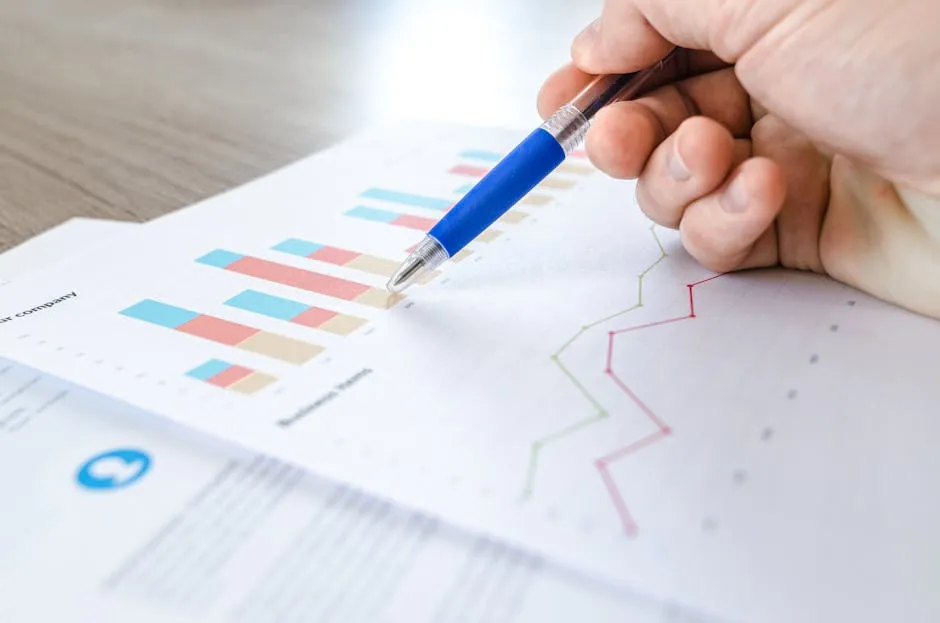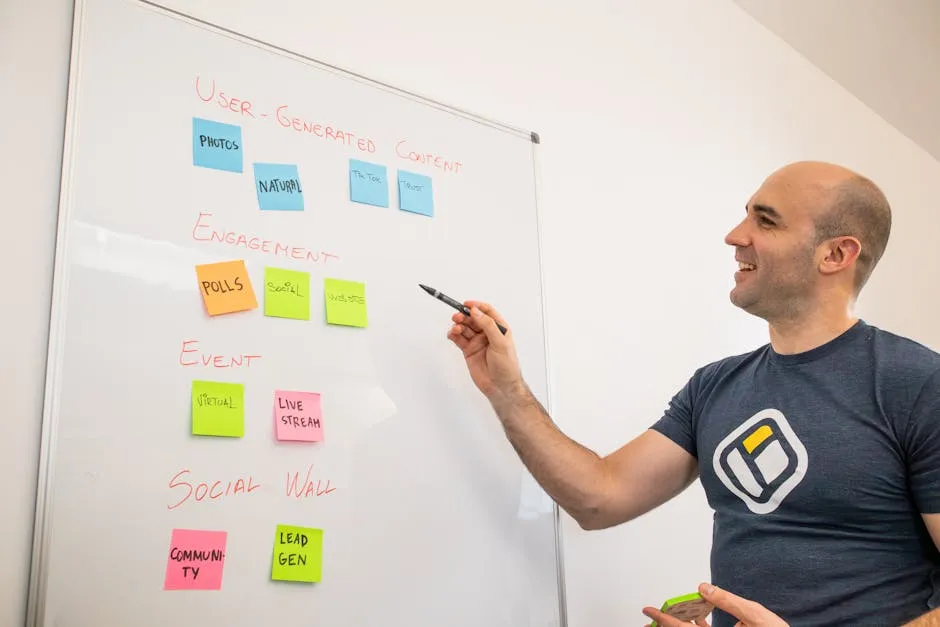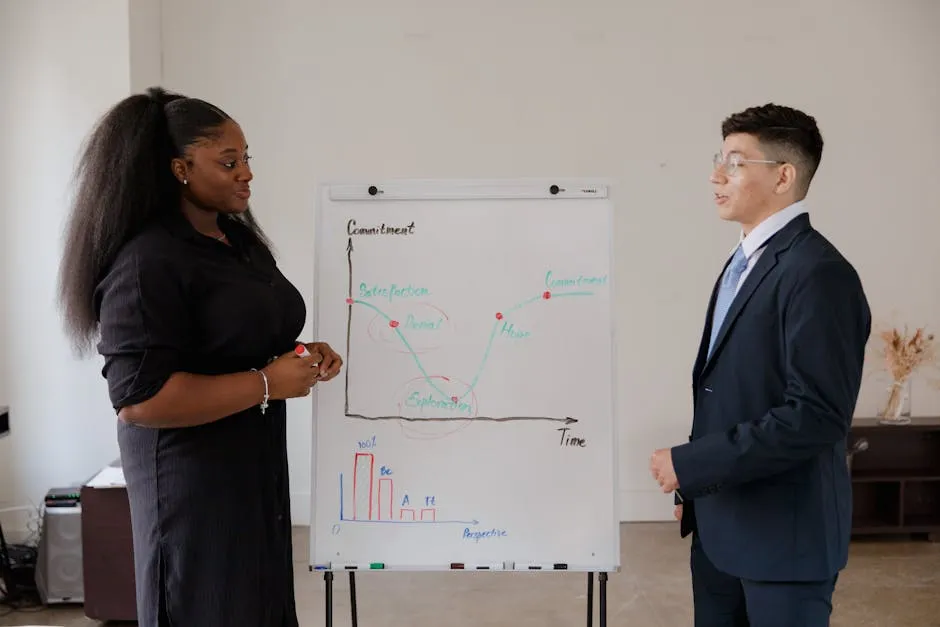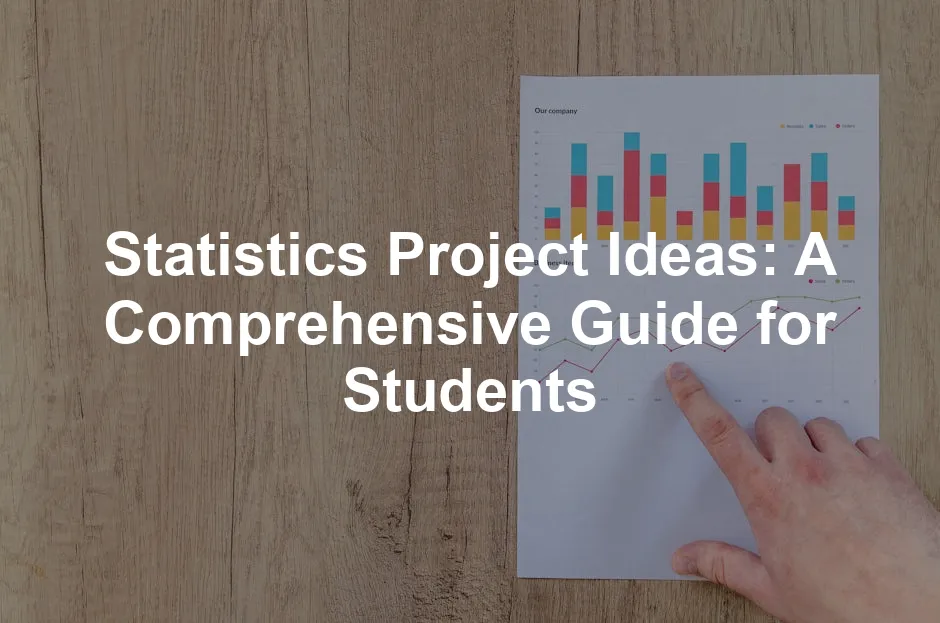Introduction
Statistics is more than just numbers; it’s the art of interpreting data. It plays a vital role in fields like science, business, healthcare, and social sciences. With the rise of big data, understanding statistics has never been more crucial. In our data-driven world, the ability to analyze and interpret statistical information can significantly impact decision-making processes.
For students, engaging in statistics projects is an excellent way to apply theoretical concepts to real-world situations. These projects help students develop critical thinking skills, enhance their analytical abilities, and provide hands-on experience with data collection and analysis. Whether you’re in high school, college, or university, tackling a statistics project can be both educational and enjoyable.

To make your project even smoother, consider using Statistical Analysis Software. This tool can help you crunch those numbers faster than you can say “mean, median, and mode!”
This article aims to offer a diverse range of statistics project ideas. We’ll cater to students at various academic levels, ensuring there’s something for everyone. From simple surveys to complex data analyses, let’s explore the exciting possibilities that statistics projects have to offer.
What is a Statistics Project?
A statistics project is an academic endeavor where students apply statistical methods to analyze data and answer specific research questions. These projects can range from simple surveys to complex analyses involving multiple variables.
Key components of a statistics project include:
- Hypothesis Formulation: Start with a clear, testable hypothesis. This statement guides the research and provides direction for data analysis.
- Data Collection: Gather relevant data from credible sources. This can involve surveys, experiments, observational studies, or using existing datasets.
- Data Analysis: Employ appropriate statistical techniques to analyze the collected data. This may include descriptive statistics, inferential statistics, regression analysis, and more.
- Presentation: Finally, present the findings in a structured report or presentation, highlighting key insights and conclusions drawn from the analysis.
Statistics projects are crucial for problem-solving in the real world. They help us understand trends, make predictions, and inform policy decisions. As students engage in these projects, they not only learn about statistical methods but also develop valuable skills applicable in various careers.

If you’re looking for a way to organize your data collection, a Data Collection Notebook can be your best friend! It keeps all your notes and observations in one neat place.
How to Find the Right Topics for Your Statistics Project
Choosing the right topic for your statistics project can be a daunting task. However, with some strategic planning and consideration, you can identify a project that excites you. Here are some best practices for selecting a compelling project topic:
- Identify Personal Interests: Start by brainstorming topics that genuinely intrigue you. When you’re passionate about a subject, the project will be more engaging and enjoyable.
- Ensure Data Availability: Before finalizing your topic, check if the necessary data is accessible. This could include online databases, surveys, or public records. Having reliable data is crucial for a successful analysis.
- Consider the Scope: Make sure your chosen topic is manageable within the time frame and resources available. Avoid overly broad topics that may lead to difficulties in focusing your research.
- Craft a Clear Problem Statement: A well-defined problem statement will guide your research. It should specify what you aim to investigate and provide a foundation for your hypothesis.
- Research Resources: Utilize various resources to gather ideas and data. Websites, academic articles, and databases can provide inspiration and context for your project.
Engaging in a statistics project is an opportunity to explore fascinating questions and apply your knowledge. By following these steps, you’ll be well on your way to identifying a topic that not only piques your interest but also contributes meaningfully to the field of statistics.

While you’re exploring, consider picking up a great reference like Statistics for Dummies Book. It’s a friendly guide that can help you brush up on your stats knowledge!
80+ Unique Ideas & Topics for Your Statistics Projects
Must-Know Topics for Statistics Projects
When embarking on a statistics project, it’s vital to choose topics that resonate with current trends and student interests. Here’s a selection of must-know topics that are both engaging and relevant:
- Time Spent by Students on Social Media: Analyze how much time students dedicate to platforms like Instagram, TikTok, and Facebook. Explore correlations with academic performance and mental health. You might find that the hours spent scrolling might come at the expense of study time.
- Impact of Caffeine on Academic Performance: Investigate whether caffeine consumption enhances or hampers students’ grades. This project could involve collecting data on coffee intake and correlating it with exam scores. You may discover that while coffee gives a short-term boost, it could lead to a jittery performance when it matters most.
- Students’ Preferred Genres for Movies and Music: Survey classmates to see what genres dominate their playlists or Netflix queues. This project can delve into cultural influences and changing preferences, perhaps revealing that rom-coms reign supreme during exam weeks!
- Course Fee Structures for Various Academic Disciplines: Analyze the financial burden of different courses. This project can highlight disparities in education costs and may prompt discussions on accessibility and equality in education.
- Success Rate of Students Sitting in the Front Seats: Conduct a study on whether students who sit at the front benefit more academically. This might uncover insights into participation rates and engagement levels in classroom settings.
- Connection Between Birth Order and Academic Success: Explore if being the firstborn, middle child, or youngest sibling affects academic performance. You could find that firstborns often take the lead, but might also feel more pressure to succeed.
- Comparative Study on College Students Based on Culture, Sex, and Background: Analyze how diverse backgrounds influence academic success and social interactions. This could lead to fascinating insights about inclusivity and the college experience.
- Influence of Common Subjects in College on Competition and a Student’s Future: Investigate how subjects like STEM versus humanities shape future career opportunities. This could shed light on societal trends in job markets and educational preferences.

For an in-depth look at how to effectively analyze data in various fields, check out tips for effective data analysis in economics and statistics.
Top Statistics Project Ideas
Ready to tackle something advanced? Here are some top statistics project ideas that promise depth and analytical rigor:
- Marketing Effectiveness Studies: Analyze data from various marketing campaigns to determine which strategies yield the highest return on investment. This project is perfect for aspiring marketers looking to blend creativity with data.
- Correlation Between Drug Use and Crime Rates: Examine statistical data to see how substance abuse correlates with crime incidents. This project can provide insights into societal issues and inform policy discussions.
- Analysis of Sleep Patterns and Academic Performance: Investigate how sleep quality affects students’ grades. This could lead to a deeper understanding of the balance between social life and academic responsibilities.
- Impact of Online Learning on Student Engagement: Study how the shift to online classes has altered student participation and learning. This project could help educators devise better online teaching strategies.
- Effect of Social Media on Body Image: Analyze survey data to see how social media influences self-esteem and body image issues among students. This sensitive topic could foster important discussions around mental health.

Statistics Project Topics for University Students
For university-level research, here are complex topics that can lead to insightful analyses:
- Financial Analysis of Startup Companies: Dive into the financial health of startups, assessing how initial funding impacts long-term success. This project could be invaluable for aspiring entrepreneurs.
- Statistical Assessment of Healthcare Efficiencies: Examine the efficiency of different healthcare systems or practices. This could involve analyzing patient outcomes versus costs across various hospitals.
- Predictive Analysis of Job Market Trends: Use statistical models to forecast future job market trends based on current data. This project could help students align their studies with industry demands.
- Impact of Automation on Employment Rates: Investigate how automation in various industries affects job availability. This project could lead to discussions about the future of work and necessary skill sets.
- Statistical Study on Mental Health Trends Among Students: Analyze survey data to assess mental health trends in university populations. This could provide crucial insights into student well-being and support services.

For those interested in statistical methods, you can explore statistical methods for finance professionals 2024 to enhance your understanding and application of statistics in finance.
Project Topics in Statistics on Socio-economics
Socio-economic data analysis offers a rich tapestry for statistical exploration. One compelling project idea focuses on examining the impact of minimum wage laws on employment rates.
First, you might want to gather data from various states or countries that have recently changed their minimum wage laws. Analyze employment statistics before and after these changes. You could employ regression analysis to identify trends. This method will help you determine if there’s a significant correlation between the wage hike and employment levels.
Consider incorporating demographic factors into your analysis. For instance, how does the impact of minimum wage vary across different age groups, genders, or educational backgrounds? This will add depth to your study. You might find that younger workers experience a different impact compared to older workers.
Another interesting angle could be exploring regional variations. Do urban areas respond differently to minimum wage increases than rural areas? This could be a fascinating inquiry into how geographical factors influence economic policies.
Don’t forget to check various sources for your data. Government databases, labor organizations, and economic research institutes can provide valuable information. As you analyze the data, be sure to present your findings in an engaging way. Use charts and graphs to illustrate trends vividly.

Finally, your conclusion should reflect on the broader implications of your findings. Discuss how minimum wage laws affect not just employment rates but the overall economy. This project will not only hone your statistical skills but also deepen your understanding of socio-economic dynamics.
AP Statistics Topics for Project
For AP Statistics students, analyzing voter behavior using polling data presents a unique opportunity for engaging research. This project involves collecting polling data from various elections, focusing on how demographic factors influence voter preferences.
Start by gathering data on past elections. You can find this data through reputable sources such as academic databases, government records, or polling organizations. Key variables to consider include age, gender, ethnicity, and education level. These variables will be crucial in understanding voting patterns.
Next, apply statistical analysis techniques like chi-square tests or logistic regression. These methods will help you determine if demographic factors significantly influence voting behavior. For example, you might discover that younger voters lean towards different candidates compared to older voters.
Visualizing your findings through bar charts or pie charts can enhance your presentation. Consider using geographic maps to illustrate voting patterns by region. This adds a dynamic element to your project, making your data more accessible and engaging.
In your conclusion, reflect on the implications of your findings. Discuss how understanding voter behavior can inform political campaigns and policy decisions. This project not only sharpens your statistical skills but also expands your knowledge of civic engagement.

Statistics Projects for High School Students
High school students can engage in a delightful and relevant project by conducting a survey on favorite study methods. This project encourages students to explore data collection and analysis while addressing a topic that resonates with their peers.
Begin by designing a simple survey that asks classmates about their preferred study techniques. Questions could include preferences for group studying versus solo studying, digital tools, or traditional methods like flashcards. Ensure to include open-ended questions as well, allowing for richer qualitative data.
Once the surveys are collected, compile the data. Utilize descriptive statistics to summarize the findings. For instance, you can calculate the mean, median, and mode for different study methods. Present this information through engaging graphs and charts to make the data visually appealing.
Consider analyzing the results based on factors such as grade levels or subjects. Do certain study methods work better for specific groups? This could lead to interesting discussions about effective learning strategies.
In your conclusion, reflect on the implications of your findings. What do you think are the best study methods for different types of students? This project not only enhances your statistical skills but also provides practical insights that can benefit your classmates.

Project Ideas for College Students
College life is a whirlwind of experiences, and what better way to channel those experiences into your statistics projects? Here’s a hot topic that resonates with many college students: the correlation between study habits and GPA.
Imagine this: you’ve got a group of students who swear by their late-night cramming sessions while others are early birds who rise with the sun. You can survey these students to see how their study habits impact their grades. Do those who study in the morning have higher GPAs? Or do night owls outperform their peers?
To kick things off, create a survey that asks questions about study environments, time spent studying, and methods used—think flashcards, group studies, or even those adorable study apps. Once you’ve collected your data, a little regression analysis could uncover intriguing insights. Perhaps you’ll find that students who study in groups score higher than those who study solo. Or maybe the caffeine-fueled late-night cram sessions yield diminishing returns.
In your report, include some eye-catching visuals like bar graphs and pie charts to represent your findings. This project not only hones your statistical skills but also sheds light on the age-old debate of studying methods. Plus, it’s incredibly relevant to your peers, making it a hit at any presentation.

Statistics Project Ideas for College Students on Sports
Sports lovers, this one’s for you! A fascinating project idea is to examine the relationship between team salary and performance metrics. It’s a classic, but always relevant—does throwing money at players guarantee success?
Choose a couple of professional sports teams from leagues like the NFL, NBA, or MLB. Collect data on their team salaries and corresponding performance metrics, such as win-loss records, playoff appearances, or player statistics.
Once you have your dataset, dive into regression analysis to explore if there’s a correlation between salary and success. Are teams with higher salaries consistently performing better? Or do we see underdog teams with lower salaries outperforming their wealthier counterparts?
In your final report, include not just the numbers, but also some engaging anecdotes about the teams and players involved. Use visual aids like scatter plots to illustrate the data clearly. This project will not only enhance your statistical skills but also deepen your understanding of the sports world and its financial dynamics. Plus, you get to brag about your findings at the next game night!

Statistics Project Ideas for College Students on Finance
When it comes to finance, statistics is your trusty sidekick. Dive into the world of finance-focused projects, where numbers tell compelling stories. Let’s explore some standout ideas that will have you crunching numbers like a pro.
One fascinating project idea is to investigate the economic impacts of financial literacy programs. You could analyze data from various communities before and after implementing financial literacy initiatives. Gather statistics on savings rates, debt levels, and investment behaviors. The goal? To uncover whether these programs genuinely empower individuals to make better financial decisions.
To kick off this project, start by identifying a target demographic—perhaps college students or low-income families. Then, collect data through surveys or existing financial records. After gathering your information, employ statistical methods like regression analysis to explore the correlations between financial literacy and economic outcomes.
Consider crafting a comparison between different regions or populations. Are the results consistent across diverse areas? Or do some communities show more significant improvements than others? This exploration can lead to valuable insights on tailoring financial education to meet specific needs.
Don’t forget to incorporate visual elements in your presentation. Graphs showcasing changes in savings over time can illustrate your findings effectively. Plus, sharing real-life stories from participants can add a human touch to the data, making your project not just informative, but engaging.
This project not only sharpens your statistical skills but also emphasizes the importance of financial education in fostering economic stability. By the end, you’ll be equipped with a deeper understanding of how financial literacy shapes individual and community financial health.

For insights on the challenges faced in statistical analysis, you might find it useful to read about the problem with inferential statistics.
Conclusion
Choosing the right project topic in statistics is crucial for success. It sets the stage for learning, research, and exploration. The ideas provided, from analyzing financial literacy programs to studying sports performance metrics, offer a starting point for your academic adventure.
Explore these concepts and adapt them to your interests and career goals. Statistics is not just about numbers; it’s about applying analytical thinking to real-world issues. The skills you develop while conducting these projects will carry over into various fields, from finance to healthcare, and beyond.
Delve into the practical applications of statistical analysis in everyday life. Understanding data can help you make informed decisions, whether you’re budgeting for personal expenses or analyzing market trends for a future career. Embrace the analytical mindset, and let your curiosity guide you through the world of statistics.
FAQs
What is a good statistics project topic?
A good statistics project topic is one that resonates with your interests and has available data. For example, analyzing the relationship between social media usage and academic performance can yield insightful results.
What are the common components of a statistics project?
Key components include formulating a hypothesis, collecting data, analyzing that data, and interpreting the results. Each piece is vital in constructing a coherent project.
How do I conduct a statistical analysis?
To conduct a statistical analysis, start with data collection. Next, apply statistical methods to analyze the data, like regression or t-tests. Finally, report your findings clearly and concisely.
How can I find data for my statistics project?
Data can be found through online databases, government websites, surveys, and academic journals. Make sure to choose credible sources for reliable information.
What are some interesting statistical questions to explore?
Consider questions like: How does exercise impact academic performance? What is the correlation between sleep patterns and stress levels? These intriguing inquiries can lead to engaging projects.
Please let us know what you think about our content by leaving a comment down below!
Thank you for reading till here 🙂
And don’t forget to fuel your study sessions with some Study Snacks Variety Pack to keep your energy up while crunching those numbers!
Lastly, if you’re looking to stay organized, an Academic Planner can help you keep track of deadlines and project milestones. Happy studying!
All images from Pexels




